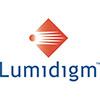
Lumidigm Fingerprint Sensors Help Track Vaccination Histories of Children in Developing Countries
Lumidigm announced that its multispectral imaging fingerprint sensors, as part of a solution supplied in partnership with Fulcrum Biometrics (San Antonio, Texas), are helping to stop vaccine waste for the millions of Africans not yet vaccinated.
 Until now, the vaccine delivery system has been hampered by ineffective tracking and reporting and, consequently, millions of young children are not being vaccinated. An estimated 2.5 million born this year will die before the age of five. The delivery model in many parts of Africa depends on a multitude of healthcare workers who serve very large and remote areas. When there are no vaccination records to consult, many patients are re-immunized unnecessarily, others are simply missed and a finite supply of vaccine is wasted.
Until now, the vaccine delivery system has been hampered by ineffective tracking and reporting and, consequently, millions of young children are not being vaccinated. An estimated 2.5 million born this year will die before the age of five. The delivery model in many parts of Africa depends on a multitude of healthcare workers who serve very large and remote areas. When there are no vaccination records to consult, many patients are re-immunized unnecessarily, others are simply missed and a finite supply of vaccine is wasted.
Unfortunately, without a proper and reliable means of identification, vaccine wastage rates are higher than 50 percent in some of the most challenging geographies. VaxTrac is solving this problem with a biometric vaccination registry that is operated and managed in the field with low-cost mobile devices. Adult and child patients are identified in the registry with fingerprint sensors from Lumidigm. Returning patients can pull up their vaccination records with the touch of a finger, allowing a healthcare worker to deliver appropriate care.
“With our VaxTrac system leveraging Lumidigm fingerprint sensors, we have been able to improve immunization tracking which allows us to reduce waste so that we can vaccinate more people and save lives,” asserted Mark Thomas, executive director of VaxTrac, a non-profit organization supported by The Bill and Melinda Gates Foundation, among others. “We started evaluating Lumidigm sensors in 2012. Since the skin of children, especially young children, can be very malleable, we knew from experience that conventional biometric technologies that need a finger pressed against the device do not work. The ability that Lumidigm offers to pull fingerprint images from deeper layers produces images less susceptible to distortion and allows us to track vaccinations accurately.”
Multispectral imaging is a sophisticated technology specifically developed to overcome the fingerprint capture problems that conventional imaging systems have in less-than-ideal conditions. This more effective technology is based on the use of multiple spectrums of light and advanced optical techniques to extract unique fingerprint characteristics from both the surface and subsurface of the skin. That subsurface capability is important because the fingerprint ridges seen on the surface of the finger have their foundation beneath the surface of the skin, in the capillary beds and other sub-dermal structures.
“Being able to quickly read every patient’s fingerprints, no matter how problematic, in all types of conditions, from extremely dry to wet, is vital to this program,” emphasized Bill Spence, Lumidigm vice president of sales-North America, Europe and Australia. “Biometric authentication has reduced the waste of vaccine dramatically, helping so many more people get vaccinated.”
The biometric vaccine registry also enables real-time reporting for streamlined supply-chain management, further reducing waste.
The first in-country deployment of the Lumidigm fingerprint sensors was in March 2013. The units are now in Kenya, Uganda and Benin, with the largest deployment in 40 clinics throughout Zambia.
Community healthcare workers are trained to use the biometric vaccine delivery system. The simple, user-friendly system was especially developed for workers with limited literacy. With the biometric VaxTrac system, expensive, specialized training is not necessary for vaccine delivery in remote areas.
“My favorite part is to see the shock on healthcare workers’ faces after their first scan of another person’s fingerprint,” Thomas added. “The patient is identified instantly, and all their vaccination information is available on the computer screen in an intuitive graphic interface. Workers know immediately what vaccines to administer and which doses are not needed, and may be reserved for other citizens.”